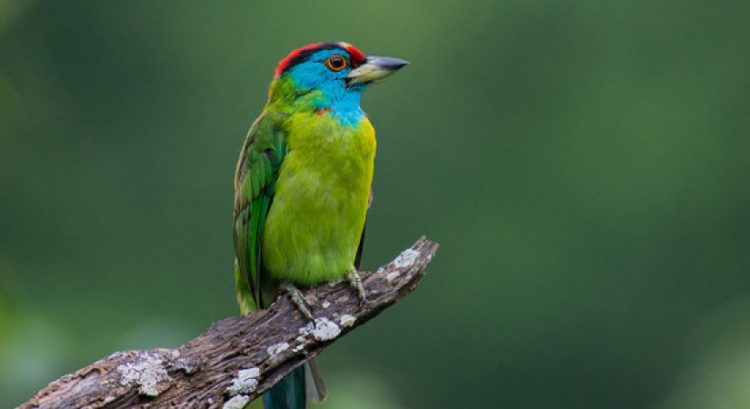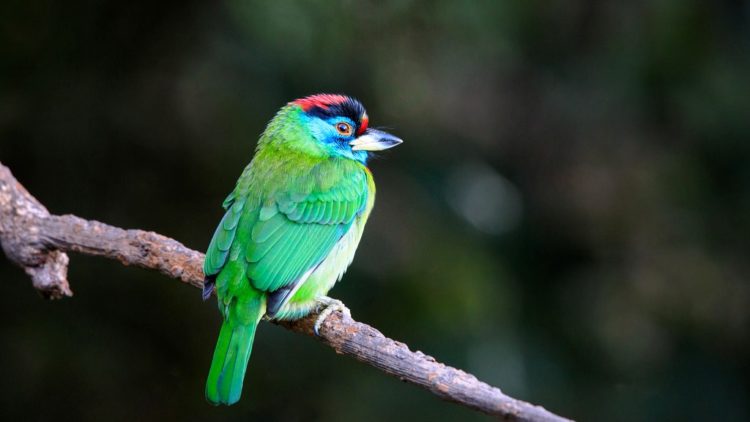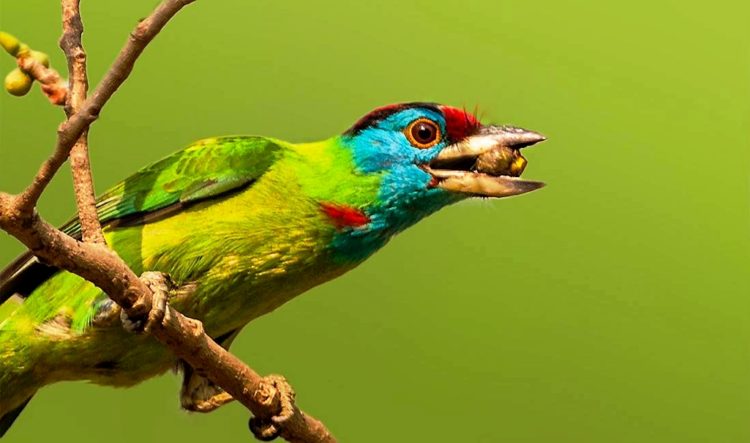The Magical Blue-throated Barbet is an Asian barbet with bright green, blue, and red plumage, seen across India, Northeast Pakistan, Bhutan, Nepal, Bangladesh, Southwest China, Thailand, central Laos, north Annam, and Vietnam. A blue-throated barbet is a small green bird with a blue head and throat.
It has a red crown and lores, bordered in black. In between the black and red lores, there is a thin tan line. The bird’s tail is green, while its beak is ivory (horn-colored), and the upper mandible is tipped in blackish gray. Its under-tail coverts are bluish-grey. Bird eyes are brown. The blue-throated barbet “Psilopogon asiaticus” and toucans are a group of near passerine birds with a worldwide tropical distribution.
The species gets its name from the bristles that fringe their heavy bills. The bird size is 22–23 cm; 61–103 grams. It likes to eat figs, flowers, berries, and insects such as grubs, crickets, mantises, ants, cicadas, dragonflies, locusts, beetles, and moths. They are widespread residents in the hills of the Himalayas. These blue-throated barbet species are non-migratory resident birds.
The birds at higher altitudes may descend to lower levels during the winter. They frequent evergreen forests, deciduous forests, gardens, orchards, teak forests, and cities with fruiting trees. The turquoise-throated barbet was formerly considered a subspecies. Males and females look alike. Young birds have an overall duller plumage. The species’ breeding season normally starts in March and goes on until July.
The bird’s courtship behavior consists of mutual feeding, and paired birds will ‘duet’ and display. Both parents habitually excavate a nest hole about 1.5 m to more than 8 m above the ground, every so often on the underside of a dead branch. They line their nests with grasses, wool, or plant materials.
It is like other members of Psilopogon, closely related to the moustached barbet and also related to the golden-throated barbet (P. franklinii), and the black-browed barbet (P. oorti). The average clutch consists of 2 to 5 white, oval, slightly glossed, and thin-shelled eggs, which are incubated by both parents for about 14 days.
Both parents also share in raising the chicks once they have hatched. The young are believed to mature when they are about 30 to 40 days old. The population size has not been quantified, but it is not believed to approach the thresholds for being vulnerable under the population size criterion.
Also Read: The Mystery Bird Yellow-Billed Oxpecker







